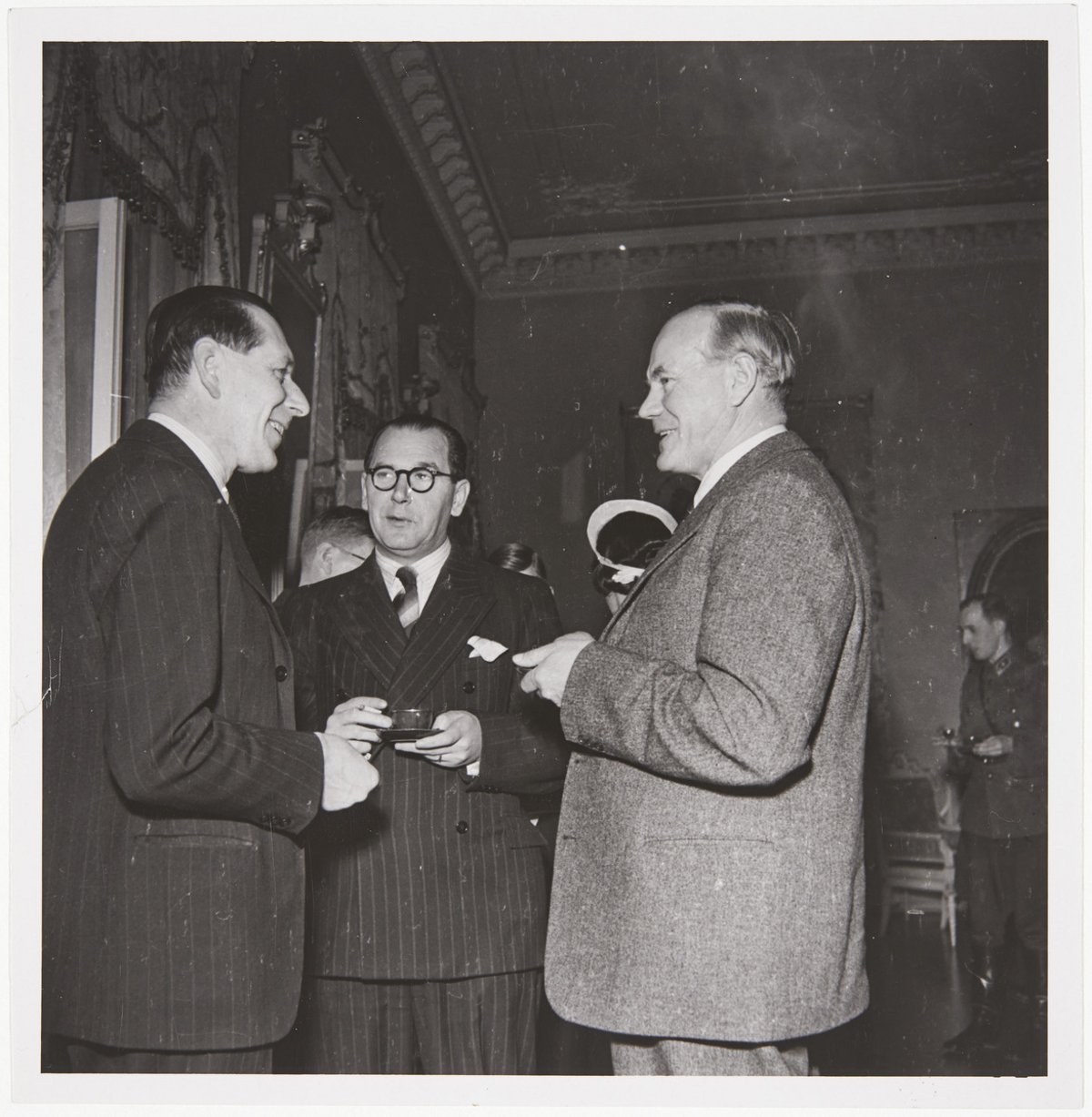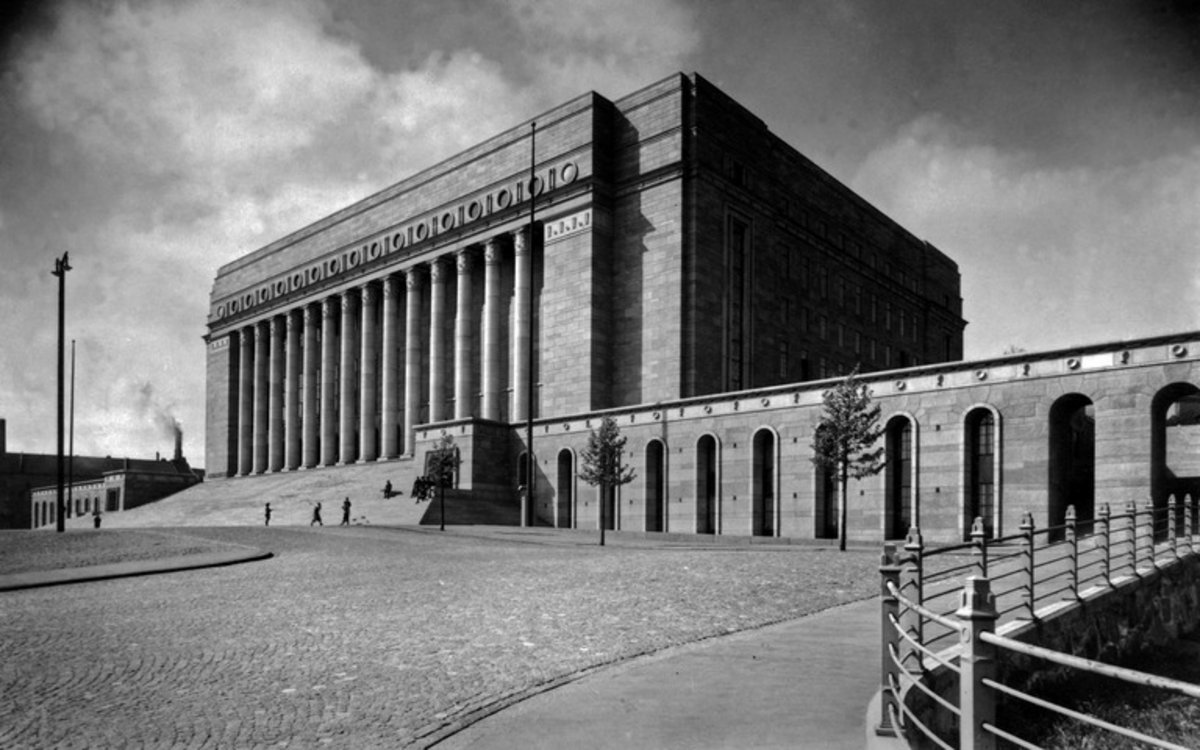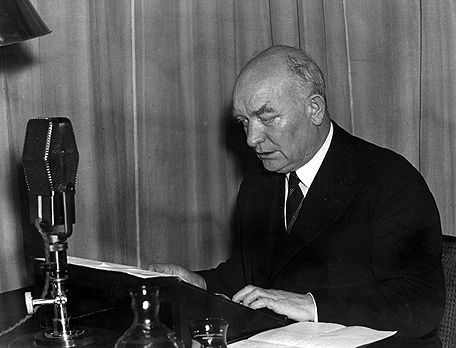Karl-August Fagerholm, 1901-1984
One of the most influential figures in Finnish politics during the post-war period, Karl-August Fagerholm was a social democrat who served as a Prime Minister for three terms and speaker of parliament for five terms. He was a member of parliament for 36 years in total and was a keen supporter of Nordic cooperation.
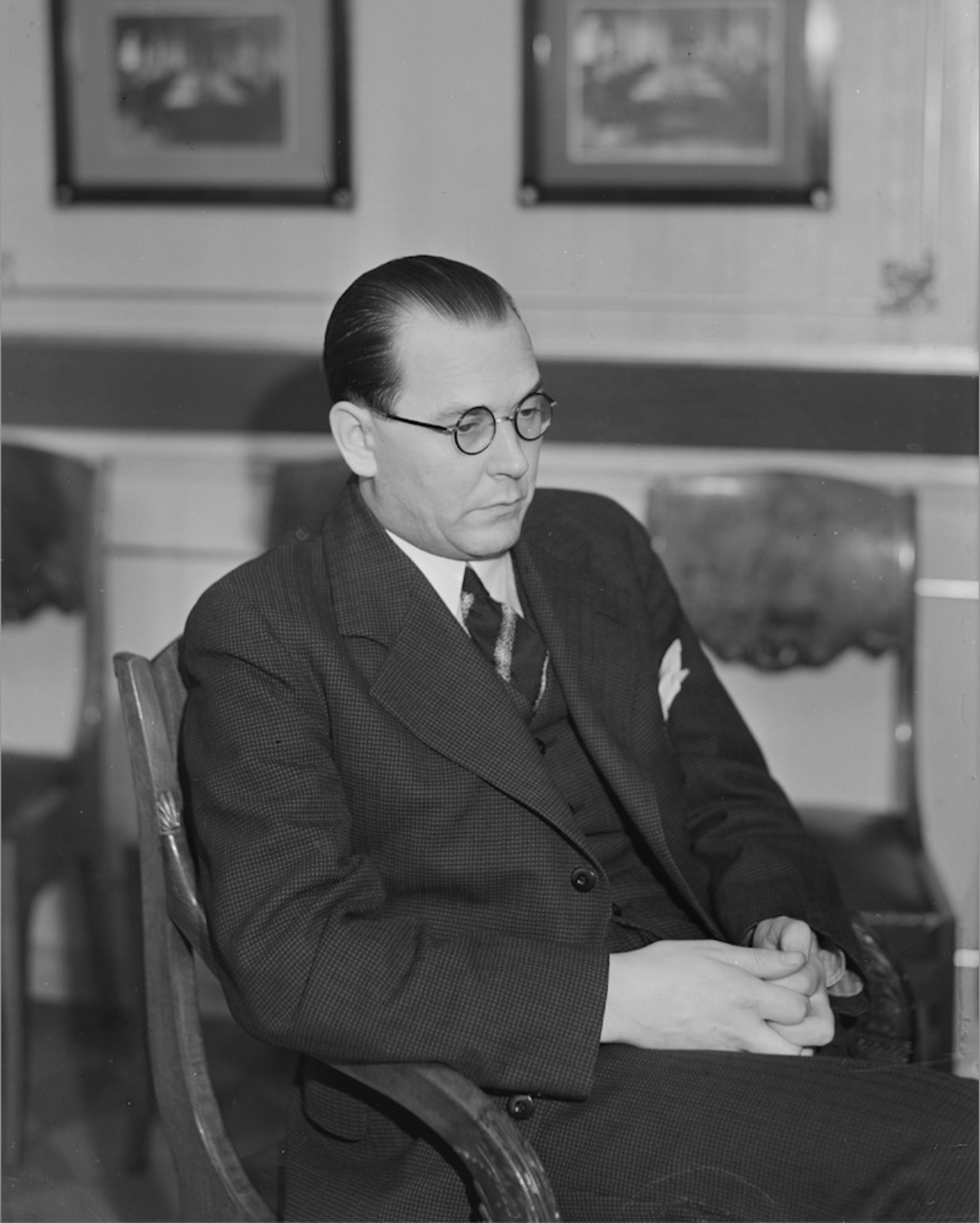
In addition to his domestic parliamentary career, Karl-August Fagerholm (1901-1984) was Director General at Alko, the national alcoholic beverage monopoly in Finland, from 1952-6. He also served as President of the Nordic Council in 1962, and embraced the idea of ‘folkhemmet’, espousing the importance of making the nation a good home for all throughout his life.
From barber to the head of a union
Fagerholm was born in Siuntio/Sjundeå in the south of Finland in 1901. His family belonged to the working class and lived in modest circumstances. Fagerholm worked in a barbershop and was involved in the activities of the social democratic labour movement from a young age. His mother tongue was Swedish, although he could of course speak Finnish as well, and this meant that he could familiarise himself with Swedish socialist literature already during his adolescence.
After the Civil War in 1918, the social democratic movement needed active people to undertake a number of practical roles. During the 1920s, Fagerholm took on several positions of trust, both in the trade union movement and in the Social Democratic Party, subsequently becoming a central activist in the Swedish-speaking labour youth movement. In 1923, he left his job at the barbershop and started a job as an editor for the magazine Arbetarbladet, where he was promoted to Editor in Chief three years later. It was also through the labour movement that Fagerholm met his wife, with whom he had three children.
Throughout this time, Fagerholm was a trade union activist for the business union (Liikealan ammattiliitto which later merged into PAM, Service Union United). In the 1920s, he was also in charge of Nordic relations within the Finnish Social Democratic Party. His mother tongue of Swedish was an asset for him, since most of the Finnish activists in the labour movement could not speak a Scandinavian language. Cross-Nordic cooperation within the labour movement and the social democratic parties at the time meant that his network of Nordic contacts grew throughout the 1920s and 1930s. In some sense, he created a Nordic transnational space through these contacts; not only did he gain knowledge about how things were done elsewhere, he also used his Nordic perspective as a resource on a national level. From 1932 to 1942, Fagerholm served as the head of Liikealan ammattiliitto and was instrumental in founding the Finnish Federation of Trade Unions. Furthermore, these early Nordic experiences influenced his fundamental views and the course of his political leanings throughout his life.
Fagerholm’s Nordic influence in parliament
Fagerholm became a member of parliament in 1930, the start of 36 consecutive years. His “Nordicness” became a hallmark of his political profile and he often concentrated on socio-political issues. Fagerholm admired the Swedish labour market and social policies that were still far out of Finland’s reach. Sweden acted as a model for Fagerholm’s vision for Finland and this approach went on to leave its mark on the country that can still be discerned today. In the 1930s, “Nordicness” became a discernable aim and normative standard for Finnish society. While the societies of Finland and Sweden were similar in many areas, they were very different in relation to, for example, public policy, social policy and labour market conditions.
In 1937, at the age of 35, Fagerholm became Minister of Social Affairs in A.K. Cajander’s centre-left government. It was a coalition between the Social Democratic Party (Suomen sosialidemokraattinen puolue) and the Agrarian Party (Maalaisliitto, which is now called the Centre Party). Prior to its formation, Fagerholm and other social democrats referred to the Scandinavian class compromise between workers and farmers as a model for Finnish politics. In his position as Minister of Social Affairs, he sought to follow Sweden and that of the Swedish Minister of Social Affairs, who was also Fagerholm’s good friend. It was during this period that he moved politically towards the left of the Finnish Social Democratic Party.
During the Winter War (1939-40) Fagerholm continued as a parliamentarian when his duties at the very top level of politics were mainly focused on maintaining Finland’s relationship with Sweden, which he actively visited several times during this period. It was Fagerholm who was responsible for organising young children being sent to Sweden for the duration of the war. He criticised Nazi ideology and Hitler heavily. Not afraid to oppose Nazi Germany, he did not accept cooperation with the Germans. Instead, he supported helping Jewish people in Finland and actively (and successfully) spoke out against the possibility of giving Finland’s Jews to the Gestapo. He criticised Germany’s occupation of Norway and Denmark publicly, which led to him losing his position as Minister of Social Affairs. He subsequently shifted towards the so-called ‘peace opposition’ and succeeded in getting his next ministerial position already in 1943, becoming speaker of the Finnish parliament that same year.
Politics in the shadow of the Soviet Union, 1940s – 1950s
In 1948, Fagerholm formed his first government with Juho Kusti Paasikivi serving as President. One of the main goals of the government was to reduce the influence of the communists. They did absolutely not want Finland to end up like Czechoslovakia, which became communist that same year. The Finnish government faced heavy criticism from Moscow, but, despite Fagerholm holding firm, challenges from the communist faction within the social democratic party and problematic relations with the Soviet Union ultimately led to Fagerholm and the government’s resignation in 1950. Despite this, his stand against Finland’s hegemonic neighbour and that of his government has been remembered for effectively consolidating a Nordic democracy in Finland.
It is said that the 1950s were characterized by a rivalry between Fagerholm and Urho Kalevi Kekkonen from the Agrarian League, and their views on Nordic cooperation differed; Kekkonen favoured a less enthusiastic approach to the other Nordic countries and was more in favour of appeasing the Soviet Union. When Kekkonen was prime minister, the Treaty of Friendship, Co-operation and Mutual Assistance was signed between Finland and the Soviet Union in 1948 (YYA-sopimus). Kekkonen’s government published a foreign policy statement suggesting that a Nordic alliance of neutrality should be entered into following this treaty. Fagerholm publicly attacked this stance because he considered that it interfered in matters that should be left up to the Scandinavian countries.
Both Fagerholm and Kekkonen also tried their luck at becoming president, and they were both in the final round of the presidential elections in 1956. Kekkonen ended up winning by only two votes: 151 to 149. Fagerholm then had another defeat by a small margin in 1957: He lost by a single vote in the election for the presidency of the Social Democratic Party. Väinö Tanner, Fagerholm’s competitor in the party, won the race, which was followed by major internal disunity and a decade’s worth of party infighting.
While Kekkonen had defeated him to become president, Fagerholm managed to form a centre-right government under his presidency in the same year. The first challenge of Fagerholm’s second time in office was a general strike. While it is generally regarded that Fagerholm handled the prolonged strike very well, it ultimately led to further fragmentation in the Social Democratic Party and the government resigning.
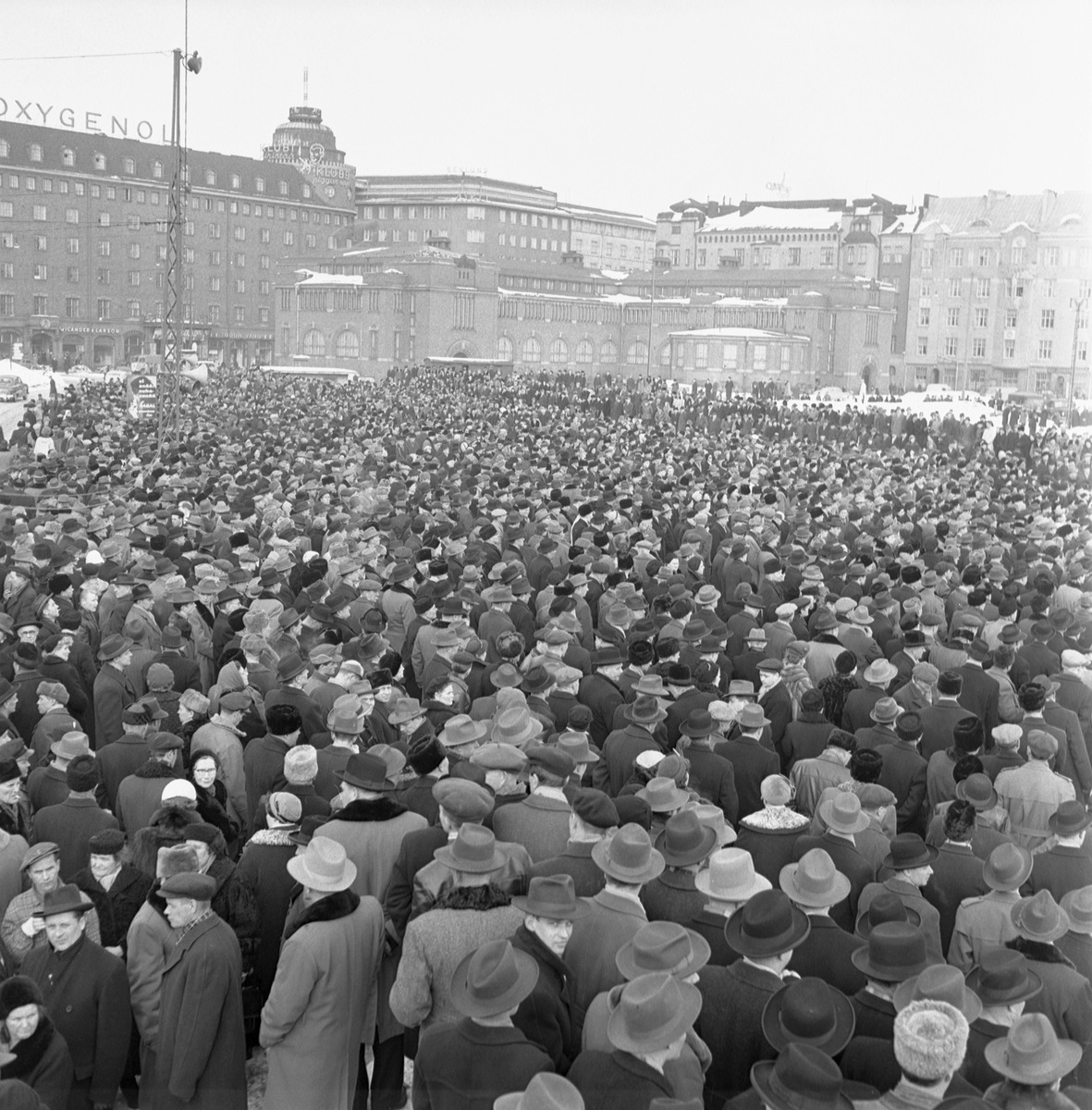
Already in August 1958, however, Fagerholm was able to form a government again, which also consisted of the National Coalition Party and the Agrarian League (Maalaisliitto). The major issues for the government this time were to do with foreign policy and pressure from the Soviet Union whose leadership was not happy with the Finnish government and its approach; the Soviet Union was very concerned about the growing influence of the West on Finland. The government was – again – forced to resign in the beginning of 1959 as a result of this complex relationship with the Soviet Union.
Fagerholm’s legacy
In the 1960s, support for Fagerholm within the Social Democratic Party was actually at its height, but, by that time, his long career and aging had started to take its toll. He left parliament in 1966 and the Finnish Social Democratic Party committee in 1969, and retired from the management of Alko in 1968. He received an honorary title of Minister of State by President Kekkonen; their relationship was after all rather good despite years of turbulent political opposition to one another. Fagerholm passed away in 1970 only four months after his wife.
Fagerholm is remembered as a socially very skilled person who was never at a loss for words. He is also remembered for strongly promoting a Scandinavian liberalism and he certainly set the course for Finland’s role in Norden in today. Not only was his influence felt in Finland, but he is also considered a key figure in the rebuilding of Nordic relations in the post-war period. People also remember him as a man of conciliation and compromise. Even before Fagerholm began imitating the rhetoric of other Nordic social democratic leaders, such as the Swede Per Albin Hansson (1885-1946), his speeches were influenced by elements of the other Nordic societies, with references to the Swedish folkhemmet.
Further reading:
- Hannu Piekkola, Suomi 100 vuotta – K. A. Fagerholm, rauhan mies [Finland 100 years - K. A. Fagerholm, a man of peace] from IlkkaPohjalainen.fi (2017).
- Mikko Majander, ‘Fagerholm, Karl-August’, In Kansallisbiografia-verkkojulkaisu, Studia Biographica 4 [National Biography of Finland] (Helsinki: Suomalainen Kirjallisuuden Seura [Finnish Literature Society], 2003).
- Mirka Österberg, ‘Karl-August Fagerholm: pohjoismaisten kokemusten esittelijä ja länsimaisen peruskäsitysten innokas puoltaja’, in Matti Hannikainen & Pia Lohikoski (eds) Työväki lähtee – mihin suuntaa tutkimus? [The workforce is leaving – where is the research is heading?] (Helsinki: Työväen historian ja perinteen tutkimuksen seura [The Finnish Society for Labour History], 2008).
- Pauli Kettunen, Urban Lundberg, Mirja Österberg & Klaus Petersen, ’The Nordic model and the rise and fall or Nordic cooperation’, In Johan Strang, Nordic cooperation : a European region in transition. (New York: Routledge, 2016), pp. 69-92.
- Werner Wiskari, Karl-August Fagerholm, ex-Finnish leader, dies: obituary, The New York Times (May 23, 1984).
